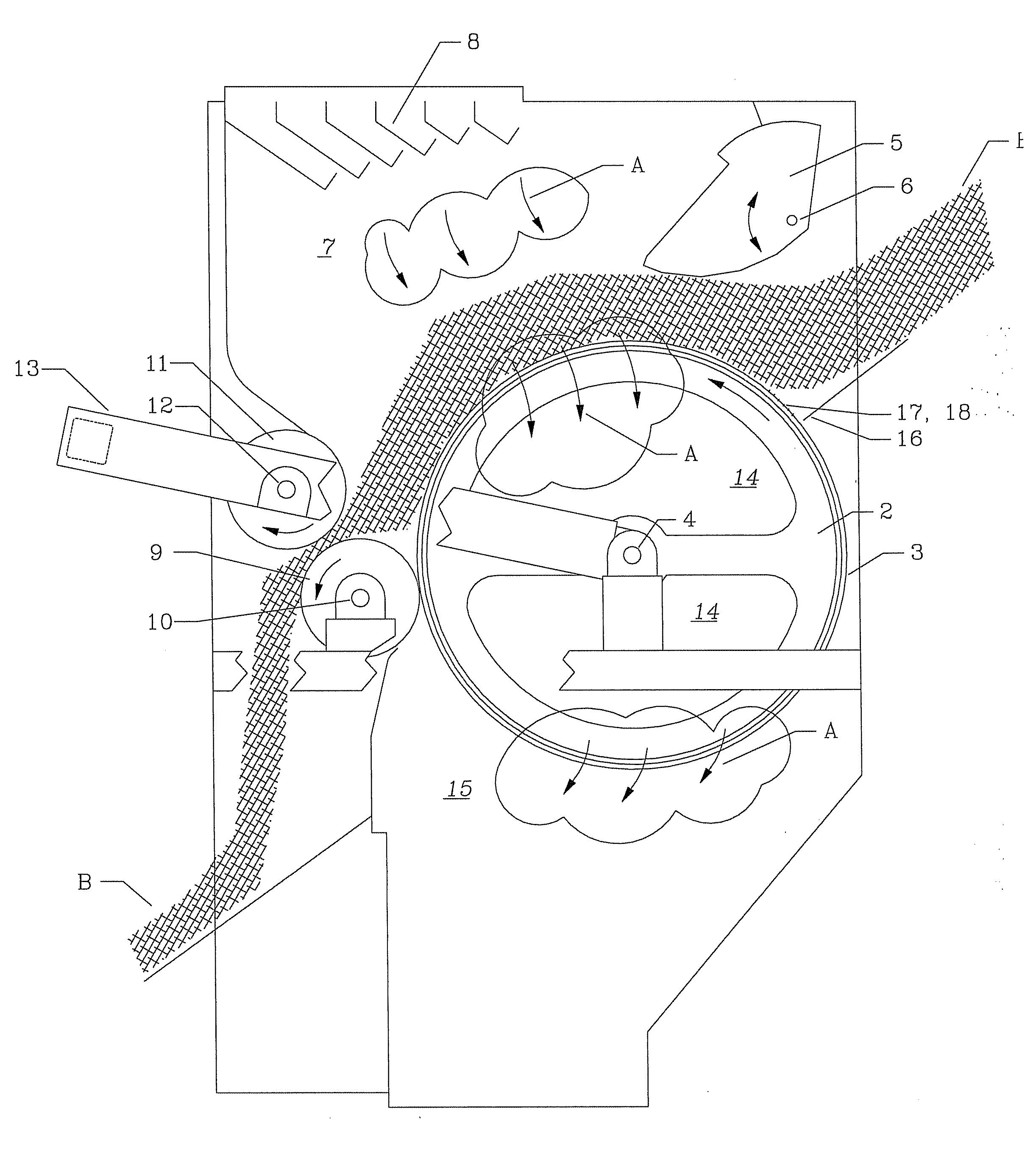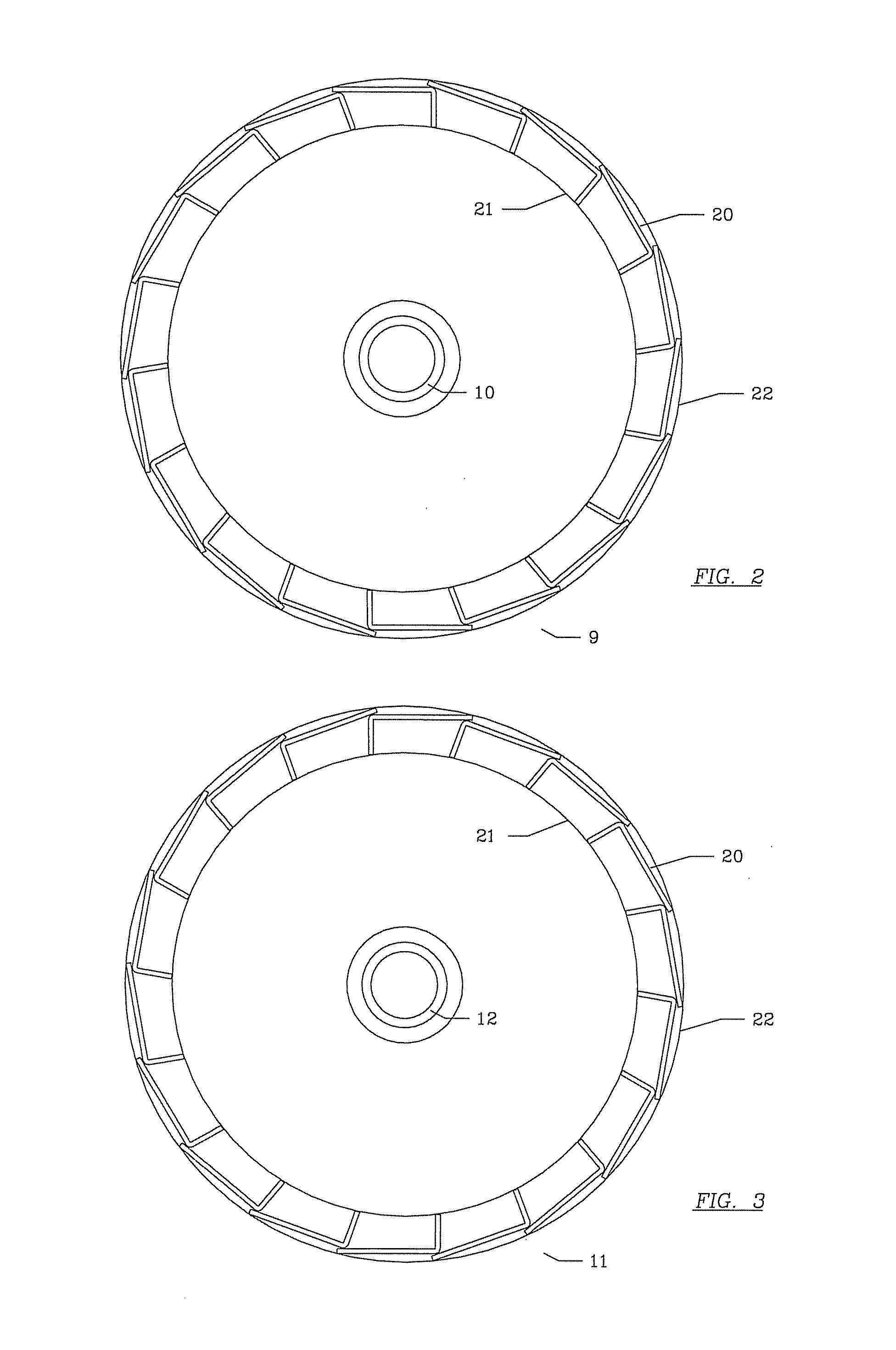Moisture conditioner for lint cotton
a moisture conditioner and lint cotton technology, applied in the field of processing fibrous materials, can solve the problems of troublesome devices, wear and tear of bale press components, and the difficulty of drying cotton to press into a bal
- Summary
- Abstract
- Description
- Claims
- Application Information
AI Technical Summary
Benefits of technology
Problems solved by technology
Method used
Image
Examples
Embodiment Construction
[0028]The present invention will now be described more fully hereinafter with reference to the accompanying drawings in which embodiments of the invention are shown. This invention may, however, be embodied in many different forms and should not be construed as limited to the illustrated embodiments set forth herein; rather, these embodiments are provided so that this disclosure will be thorough and complete, and will fully convey the scope of the invention to those skilled in the art. Like numbers refer to like elements throughout.
[0029]Referring now to FIG. 5, lint cotton L coming from lint cleaning machines (not shown) is directed to battery condenser 130 in an air stream flowing through a lint flue riser 131. Battery condenser screen 132 separates lint L out of the air stream and creates cotton batt B. The air stream continues out of the condenser 130 in a pipe 133 to a fan (not shown). Batt B is a blanket of cotton that flows out of battery condenser 130 and slides down an incl...
PUM
| Property | Measurement | Unit |
|---|---|---|
| diameter | aaaaa | aaaaa |
| diameter | aaaaa | aaaaa |
| volume | aaaaa | aaaaa |
Abstract
Description
Claims
Application Information
 Login to View More
Login to View More - R&D
- Intellectual Property
- Life Sciences
- Materials
- Tech Scout
- Unparalleled Data Quality
- Higher Quality Content
- 60% Fewer Hallucinations
Browse by: Latest US Patents, China's latest patents, Technical Efficacy Thesaurus, Application Domain, Technology Topic, Popular Technical Reports.
© 2025 PatSnap. All rights reserved.Legal|Privacy policy|Modern Slavery Act Transparency Statement|Sitemap|About US| Contact US: help@patsnap.com



